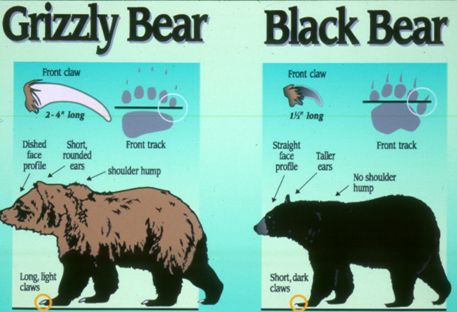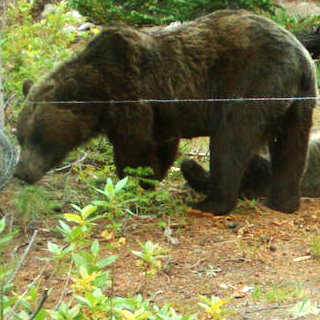Grizzly Bear Identification

The Distinctive Hump and Rump:
The grizzly's hump between the shoulders is usually visible in profile. The rump of a grizzly is lower than its shoulder when the bear is on all fours, while a black bear's rump is higher than the rest of its body. This is sometimes hard to see from a distance.
The "Dished" Face:
A grizzly typically has a somewhat concave profile from between its eyes to the end of its nose, whereas a black bear normally has a more "Roman," or convex, profile. Grizzlies tend to have smaller, more rounded ears while black bear's ears tend to be larger, more erect and more pointed.
Unique Tracks:
Compared to a black bear's track, grizzly tracks of the front feet are more square. If you take a straight edge and hold it across the track of a grizzly front foot, just in front of the pad and behind the toe on either side, it will not cross the toe on the other side of the foot. A black bear's front track is more rounded and a straight edge will cross the toe on the other side of the foot. When observing a back footprint, notice the grizzly bear print has a pointed heel and lacks the wedged instep of a black bear print. Grizzlies have long, gently curved, more obvious claws compared to black bears' shorter, more curved claws.
Grizzly bear country is a unique and special place. In the lower 48 States, it is the last domain of a magnificent animal — a vanishing symbol of our natural heritage. It is the only place where man is not necessarily the dominant species!
Killing a grizzly bear in the lower 48 States is both a federal and state offense that can bring criminal and civil penalties of up to $50,000 and a year in jail.
